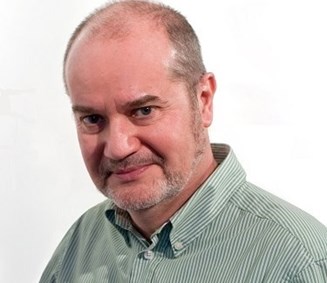Planning Aid England volunteer Colin Haylock FRTPI is a Newcastle based architect-planner with over 40 years’ experience in the public and private sectors. He was RTPI President in 2012. Here he recounts his experiences helping one of the first neighbourhood priorities statement pilots for the Gresham area of Middlesbrough.
 Over the years, through government-funded work with the Design Council and students from Newcastle University and University College London, I’ve done a fair amount of work with parish councils and neighbourhood planning groups supporting the early stage of their work on exploring and progressing neighbourhood plans. More often than not, the core of my engagement has been to help develop thinking and approaches and the politics around trying locally to turn development pressure from a threat into opportunities. There’s potentially another blog which could rewardingly explore this but today we are focused on work with and through Planning Aid England (PAE).
Over the years, through government-funded work with the Design Council and students from Newcastle University and University College London, I’ve done a fair amount of work with parish councils and neighbourhood planning groups supporting the early stage of their work on exploring and progressing neighbourhood plans. More often than not, the core of my engagement has been to help develop thinking and approaches and the politics around trying locally to turn development pressure from a threat into opportunities. There’s potentially another blog which could rewardingly explore this but today we are focused on work with and through Planning Aid England (PAE).
As a PAE volunteer, my direct work in neighbourhood planning has tended to focus on the training of volunteers to help them work with communities on approaches to improving quality of place through sensitively shaping change and growth, given my extensive experience in these areas. My most recent engagement has been very different in character – both because of the nature of the area involved and the vehicle the community and its host local authority was working with.
The Government has recognised that if many communities struggle with the demands of neighbourhood planning our more deprived communities will struggle with this even more. Seeking a path to engaging more deprived communities, it is experimenting with the concept of “neighbourhood priorities statements”. It is trialing this through local authority’s initial identification of areas which they feel might benefit from neighbourhood plans but might be limited in the embodied community resources to commit to preparing one. The neighbourhood priorities statement (NPS) is seen as a potential soft entry into neighbourhood planning – an approach which will allow a community to discuss and agree the priorities for wide-ranging action in their area. Importantly, the conversations can be broadly drawn – not simply focused on issues which can be directly addressed through planning. The work might lead to the preparation of a neighbourhood plan, it may produce ideas which can be pursued through other routes, or simply give the local authority a much richer picture of how communities see themselves and their area - the problems and opportunities – and their priorities for action.
Middlesbrough Council were keen to explore this new approach in the Gresham area which is one of the most deprived parts of the town. This is an area which has seen relatively recent housing clearance, a limited amount of completed new housing development, but where the redevelopment process has largely stalled, leaving several quite large fenced off cleared sites – some of which have been built to ground floor slab level.
They felt they had the opportunity to work here through the leadership of “Streets Ahead”, a long-established broadly focused local charity, and to build on work through the borough’s “Locality” project which brought a range of local authority services together with the police and a range of other stakeholders to address some of the most pressing problems of the area – problems related to a rich mix of poverty, drugs, anti-social behaviour, absentee landlords, population transience and more in an ethnically highly diverse population.
The initial timescale of the government pilot programme drove the need to make significant progress in the late autumn early winter period alongside the distractions of the football World Cup and early Christmas preparations. Despite this, extensive local communication and events drew a reasonable level of response – though at this stage I am not completely clear the extent to which this has reflected all dimensions of this very diverse community.
The responses are, however, very broadly based and clearly indicated priorities around Gresham becoming a cleaner, greener and safer place. What was less clear was the range of actions which might best help deliver these broad aspirations, the priorities amongst such actions --- and how the local community, Council and other stakeholders might best work together to deliver the most important of these actions.
An extension of government deadlines on the pilot programme offers an opportunity to dig deeper into these areas but “purdah” in the run up to local elections put further work with the local authority effectively on hold. I will be fascinated to see what directions emerge over the coming months and, with Planning Aid England, am keen to give what support I can, possibly focusing on the cleared and part-built sites as short and long term opportunities for delivering “cleaner, greener and safer” aspirations and exploring why these have featured so little in community responses to date.
For further information about how PAE can support local authorities in delivering community engagement in plan-making click here.
Join a panel discussion on the future of public participation in planning.


